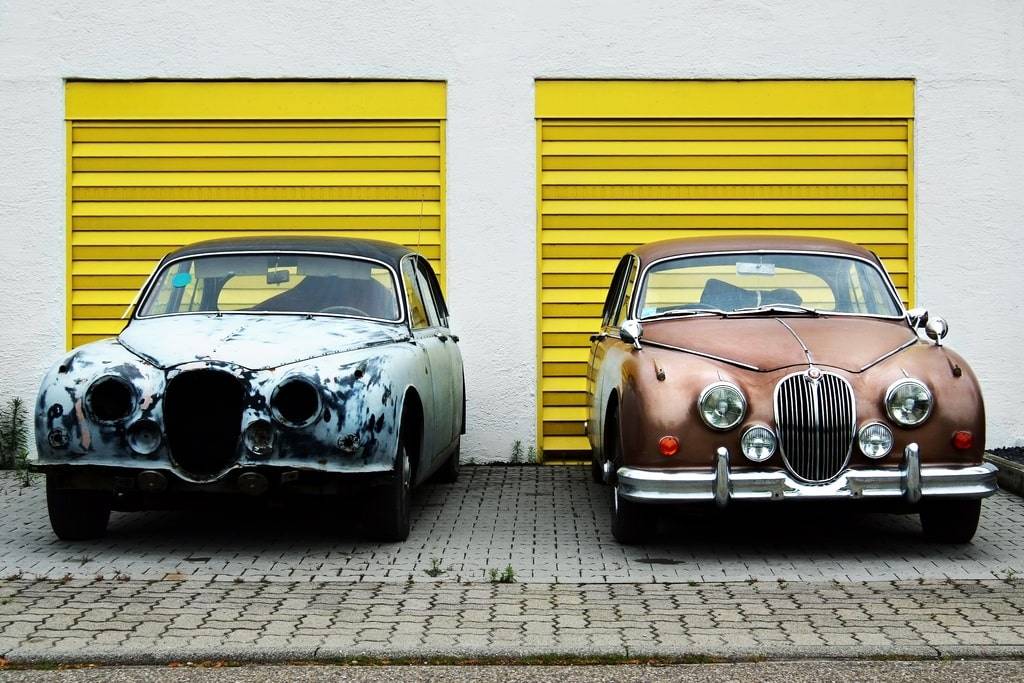For car enthusiasts who have a deep passion for cars and driving, car restoration can be the ultimate hobby. Whether it’s an antique car or a newer car in need of repair, restoring a car and taking it from the garage (or scrapyard) to the road can be a truly fulfilling experience.
The good news is that with car parts readily available, it’s easy for car enthusiasts to take on their own DIY car restoration project or work closely with a professional to make your dream car a reality.
Things to Do Before Starting
You may have an idea of what you want the finished car to look like, but for your DIY project to truly match the car you have envisioned, you will need to take a lot of high definition digital images of the car before the restoration process even begins. You need to make sure you get clear images of the entire car, including the body parts, hinges, doors, and chrome, with close-up shots from multiple angles, and don’t forget the interior. The photographs can be taken from a cellphone only if your phone’s camera is up to scratch, otherwise its best to use an actual camera to get the job done.
These high-quality images of your car are going to come in handy later on if you forget what goes where. Since there’s a good chance that your car restoration project is going to take a few months, having imagery of how your car looked like will help in the restoration process.
For those who are thinking about what goes into classic car restoration, you can learn more by reading the following tips.
Gathering Supplies
Before you go ahead and dismantle your car, you will need to get organized. This means, making sure all parts of the vehicle that needs to be replaced are preferably under one roof – yours. You can get zip lock bags to store away smaller parts of the car such as nuts and bolts. You can differentiate the car parts you remove by using color-coded bags or markers.
Also, make sure you create an inventory of the parts that are to be removed or replaced from the car and those that have to be put into the car during the restoration process. Remember to include the part number as well, since you are going to need it to identify the part whether you search for it online or at an auto parts warehouse.
Disassembling the Car
Initially, you will start by removing all the trims, side mirrors, bumpers and bumper guards and any decorative items that are on the exterior of the car. When removing expansion fasteners, remember that it’s better to break the fastener rather than the trim. You can use penetrating oil on those nuts and bolts that are rusted and won’t budge. You will also require special tools for removing some of the chrome trim strips or emblems on the car, so make sure you have them.
Once they are removed, it’s time to focus on the hood, trunk lid, and fenders of the vehicle. It’s okay to get help from someone if you are doing it alone to avoid damaging the parts. Having another person who can assist you during the car restoration process will also minimize the chances of getting hurt or injured.
Take pictures of the shims or other parts you remove will act as a reference for when it’s time to put the car back together. Besides, if you attach the shims or spacers wrong, the trunk or hood lid will not fit properly. If the doors of the vehicle do not need to be repaired or replaced, then it would be best to leave them on. This is especially because getting the doors to hang on properly during re-assembly can be one of the hardest tasks of a car restoration process. Lastly, remove both the windshield and the rear window of the vehicle to begin the restoration process.
Move to the Interior
Once the windshield has been carefully removed by removing the gaskets and gently pushing the glass from the outside as someone else supports the glass from the inside as it pops out, it’s time to move into the interior of the car. Start by removing the seats of the car along with the dash panel. Since you will probably be replacing the sound deadening material, carpet, and headliner, they will need to be removed also. Once the battery has been disconnected, you need to wrap and label the exposed wires for identification later.
It is important to note that interior restoration is usually more economical as compared to restoring the exterior of the car mainly because the latter involves painting the frame of the car. The interior restoration process should begin after the car has been painted since you wouldn’t want to scratch a freshly painted car.
Patience Is Your Friend
Restoring a car involves multiple processes, some of which might be completely new to you. You will need to develop certain skills such as welding and painting to complete a car restoration project or you can hire an experienced mechanic to help you out with the restoration of your car. Relic company for example is a car restoration company that has years of expertise in this field and can finish up your car in no time. Depending on how much work is required, a car restoration is not going to happen overnight, which is why those who are taking on a car restoration project need to have patience. Besides, sped timelines and hasty work is going to show in the end results. If you want to get the best results from your car restoration project, then time is going to be your friend.
Be Sensible and Realistic
Regardless of the amount of work that is required for the restoration of a car, taking on a methodical and sensible approach to the restoration work will ensure that you get the results you are looking for. This is mainly important to ensure you do not have to carry out the same tasks twice and also minimizes the risk of making mistakes. It doesn’t matter if you are planning to restore a Maserati or a Miata M-Edition, restoring a vehicle isn’t cheap. Keeping that in mind, taking on your car restoration in stages will give you time to tweak your initial plan before moving on to the next stage.

HEY ! I’m Nil (Founder of OnlineDrifts.com), Digital Marketer, Affiliate Marketer and a blogger writing about blogging tips, SEO, Tech Tips etc.
